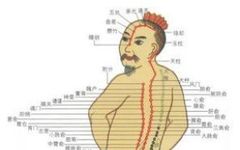Traditional Chinese Medicine Acupuncture
is the main body of the meridian system, characterized by the connection between the exterior and interior meridians, and their association with corresponding organs. It includes the three yin meridians of the hand (Taiyin Lung Meridian, Jueyin Pericardium Meridian, Shaoyin Heart Meridian), the three yang meridians of the hand (Yangming Large Intestine Meridian, Shaoyang Sanjiao Meridian, Taiyang Small Intestine Meridian), the three yang meridians of the foot (Yangming Stomach Meridian, Shaoyang Gallbladder Meridian, Taiyang Bladder Meridian), and the three yin meridians of the foot (Taiyin Spleen Meridian, Jueyin Liver Meridian, Shaoyin Kidney Meridian), collectively known as the “Zhengjing”.
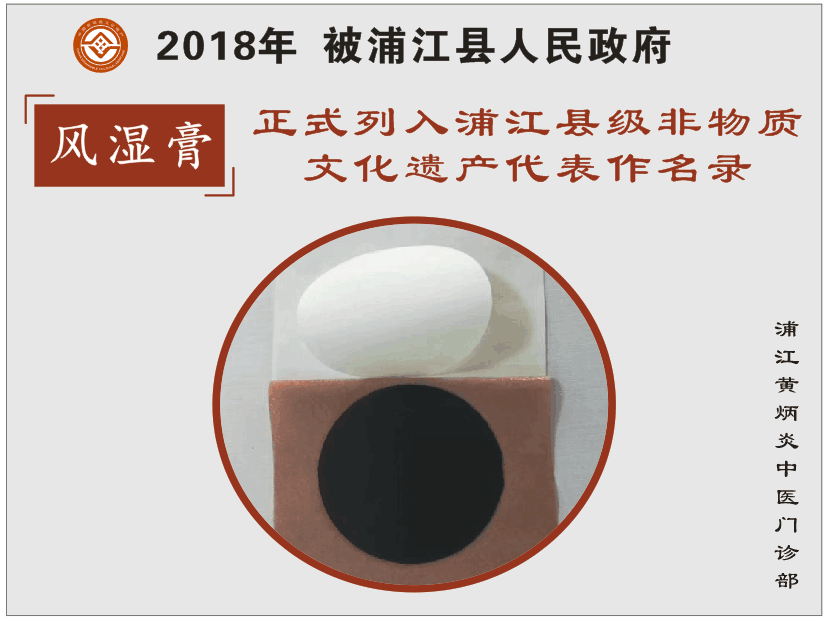
Traditional Chinese Medicine Acupuncture
The twelve meridians are interconnected through the yin and yang meridians of the hands and feet, forming a cyclical and endless transmission system. Qi and blood flow through the meridians to nourish the organs internally and reach the skin externally, circulating throughout the body. The flow sequence is: starting from the Taiyin Lung Meridian, it successively transmits to the Yangming Large Intestine Meridian, Yangming Stomach Meridian, Taiyin Spleen Meridian, Shaoyin Heart Meridian, Taiyang Small Intestine Meridian, Taiyang Bladder Meridian, Shaoyin Kidney Meridian, Jueyin Pericardium Meridian, Shaoyang Sanjiao Meridian, Shaoyang Gallbladder Meridian, Jueyin Liver Meridian, and then returns to the Taiyin Lung Meridian (see Table 1).
The directional and connection patterns are: the three yin meridians of the hand run from the chest to the hand, connecting with the three yang meridians at the fingertips; the three yang meridians of the hand run from the hand to the head, connecting with the three yang meridians of the foot on the face; the three yang meridians of the foot run from the head to the foot, connecting with the three yin meridians at the toes; the three yin meridians of the foot run from the foot to the abdomen, connecting with the three yin meridians of the hand in the chest and abdomen.
The distribution pattern of the twelve meridians on the body surface is: the yin meridians associated with the six zang organs (Heart, Liver, Spleen, Lung, Kidney, and Pericardium) are distributed on the inner sides of the limbs and the chest and abdomen, with the three yin meridians of the hand located on the inner side of the upper limbs and the three yin meridians of the foot located on the inner side of the lower limbs.
The yang meridians associated with the six fu organs (Gallbladder, Stomach, Large Intestine, Small Intestine, Bladder, and Sanjiao) mostly run along the outer sides of the limbs, the head, and the back, with the three yang meridians of the hand located on the outer side of the upper limbs and the three yang meridians of the foot located on the outer side of the lower limbs. The arrangement order of the three yang meridians of the hands and feet is: “Yangming” in front, “Shaoyang” in the middle, and “Taiyang” at the back; the arrangement order of the three yin meridians is: “Taiyin” in front, “Jueyin” in the middle, and “Shaoyin” at the back (below eight cun above the inner ankle, “Jueyin” is in front, “Taiyin” in the middle, and “Shaoyin” at the back).
The relationship between the twelve meridians is: the three yin and three yang meridians of the hands and feet communicate with each other through the jing bie and bie luo, forming six pairs of “interior-exterior” relationships.
Among them, the Taiyang and Shaoyin of the foot are interior-exterior, the Shaoyang and Jueyin of the foot are interior-exterior, the Yangming and Taiyin of the foot are interior-exterior. The Taiyang and Shaoyin of the hand are interior-exterior, the Shaoyang and Jueyin of the hand are interior-exterior, and the Yangming and Taiyin of the hand are interior-exterior.
The twelve meridians in the human body are collectively referred to as the twelve meridians or the twelve zheng meridians. They include:
Three Yin Meridians of the Hand: Taiyin Lung Meridian, Shaoyin Heart Meridian, Jueyin Pericardium Meridian
Three Yang Meridians of the Hand: Yangming Large Intestine Meridian, Taiyang Small Intestine Meridian, Shaoyang Sanjiao Meridian
Three Yang Meridians of the Foot: Yangming Stomach Meridian, Taiyang Bladder Meridian, Shaoyang Gallbladder Meridian
Three Yin Meridians of the Foot: Taiyin Spleen Meridian, Shaoyin Kidney Meridian, Jueyin Liver Meridian.
The twelve meridians have functions such as circulating qi and blood, connecting the internal and external organs, and communicating between the upper and lower parts of the body. Whether affected by external pathogens or dysfunction of the organs, it can lead to changes in the meridians. Therefore, understanding the flow, functions, and pathological conditions of the twelve meridians is of great significance for disease prevention and treatment.
The “Eleven Meridians” in the medical texts from the Han tomb of Mawangdui in Changsha, where the first version, the “Eleven Meridians of the Foot and Arm”, describes the flow of the “Arm Shaoyin Warm (Meridian)” which is similar to the current Shaoyin Heart Meridian; while the second version, the “Yin-Yang Eleven Meridians”, describes the “Arm Shaoyin Meridian (Meridian)” which is similar to the current Jueyin Pericardium Meridian. The “Lingshu: Meridians” clearly records all twelve meridians, which has been used to this day.
For over twenty years, Dr. Huang Bingyan has taken it upon himself to help the world, viewing saving lives and healing the wounded as his duty. Based on inheriting tradition and striving to promote the great learning, he has refined his medical skills, consciously broadened his horizons, and continuously made progress, widely seeking knowledge and visiting famous doctors. He has studied under renowned Chinese medicine practitioners such as Hu Fuchun and Yu Yingao, gathering strengths from various sources and deeply researching medical skills. He has treated tens of thousands of patients across Shanghai, Beijing, Hangzhou, Jiangxi, Yunnan, Sichuan, Guizhou, Hunan, Hubei, and other regions, accumulating rich clinical experience. His reputation is well-known, and patients from nearby counties such as Zhuji, Yiwu, Lanxi, Jiande, Tonglu, and Dongyang have great faith in Dr. Huang, seeking his medical advice in droves. Foreign businessmen from Germany, Russia, Arabia, Korea, Japan, and other countries who do business in Yiwu also come to seek his medical expertise.
The distribution pattern of the twelve meridians on the body surface: The twelve meridians are symmetrically distributed on the left and right sides of the head, trunk, and limbs, running through the entire body.
The six yin meridians are distributed on the inner sides of the limbs and the chest and abdomen, while the six yang meridians are distributed on the outer sides of the limbs and the head, trunk.
The distribution pattern of the twelve meridians in the limbs is that the three yin meridians of the upper limbs are the Taiyin Lung Meridian in front, the Jueyin Pericardium Meridian in the middle, and the Shaoyin Heart Meridian at the back; the three yin meridians of the lower limbs are the Taiyin Spleen Meridian in front, the Jueyin Liver Meridian in the middle, and the Shaoyin Kidney Meridian at the back. Among them, the three yin meridians of the foot below the inner ankle are Jueyin in front, Taiyin in the middle, and Shaoyin at the back, while above eight cun from the inner ankle, the Taiyin intersects with the Jueyin in front.
The three yang meridians of the upper limbs are the Yangming Large Intestine Meridian in front, the Shaoyang Sanjiao Meridian in the middle, and the Taiyang Small Intestine Meridian at the back; the three yang meridians of the lower limbs are the Yangming Stomach Meridian in front, the Shaoyang Gallbladder Meridian in the middle, and the Taiyang Bladder Meridian at the back.
The distribution of the twelve meridians in the trunk is that the Shaoyin Kidney Meridian is located 2 cun away from the midline of the chest, and 0.5 cun away from the midline of the abdomen; the Taiyin Spleen Meridian runs 6 cun away from the midline of the chest, and 4 cun away from the midline of the abdomen; the Jueyin Meridian has a less defined flow pattern.
The Yangming Stomach Meridian is distributed 4 cun away from the midline of the chest, and 2 cun away from the midline of the abdomen; the Taiyang Meridian runs along the back, respectively 1.5 cun and 3 cun away from the midline of the back; the Shaoyang Gallbladder Meridian is distributed on the side of the body.
Distribution
The distribution of the twelve meridians on the body surface follows certain rules. The specifics are described from the following three aspects.
Head and Face: The three yang meridians of the hands end at the head and face, while the three yang meridians of the feet start at the head and face, and the three yang meridians of the hands and feet connect at the head and face, hence it is said: “The head is the meeting point of all yangs”.
The characteristics of the distribution of the twelve meridians in the head and face are: the Yangming meridians of the hands and feet are distributed in the forehead area; the Taiyang meridian is distributed in the cheek area; the Shaoyang meridian is distributed in the ear and temple area; the Taiyang meridian is distributed on the top of the head and the occipital area. Additionally, the Jueyin meridian also runs to the top.
The distribution pattern of the twelve meridians in the head and face is: Yangming in front, Shaoyang on the side, and Taiyang at the back.
Trunk: The general distribution pattern of the twelve meridians in the trunk is: the three yin meridians and the Yangming meridian are distributed in the chest and abdomen (front), while the three yang meridians and the Taiyang meridian are distributed in the shoulder, back, and waist (back), and the three yin meridians of the hands, the Shaoyang, and the Jueyin meridians are distributed in the armpit, flank, and lateral abdomen (side).
Interior-Exterior Relationship
The three yin and three yang meridians of the hands and feet communicate with each other through the jing bie and bie luo, forming six pairs of “interior-exterior” relationships, namely, “the Taiyang and Shaoyin of the foot are interior-exterior, the Shaoyang and Jueyin of the foot are interior-exterior, the Yangming and Taiyin of the foot are interior-exterior, which are the yin and yang of the foot.
The Taiyang and Shaoyin of the hand are interior-exterior, the Shaoyang and the heart (Jueyin Pericardium Meridian) are interior-exterior, and the Yangming and Taiyin are interior-exterior, which are the yin and yang of the hand.”
The two meridians that are interior-exterior run along the relative positions on the inner and outer sides of the limbs and connect at the ends of the limbs; they also correspond to the organs that belong to each other, thus forming the interior-exterior relationship of the organs.
The interior-exterior relationship of the twelve meridians not only strengthens the connection due to the interconnection of the two meridians but also because they belong to the same organ, allowing the interior-exterior organs to cooperate physiologically and influence each other pathologically. In treatment, the acupoints of the two meridians that are interior-exterior often intersect.

The twelve meridians are connected to the organs, where the yin meridians belong to the zang organs and the yang meridians belong to the fu organs, with one zang paired with one fu, forming the interior-exterior relationship of the organs.
That is, the Taiyin Lung Meridian is paired with the Yangming Large Intestine Meridian, the Jueyin Pericardium Meridian is paired with the Shaoyang Sanjiao Meridian, the Shaoyin Heart Meridian is paired with the Taiyang Small Intestine Meridian, the Taiyin Spleen Meridian is paired with the Yangming Stomach Meridian, the Jueyin Liver Meridian is paired with the Shaoyang Gallbladder Meridian, and the Shaoyin Kidney Meridian is paired with the Taiyang Bladder Meridian. The meridians that are interior-exterior are closely related physiologically, influence each other pathologically, and are mutually beneficial in treatment.
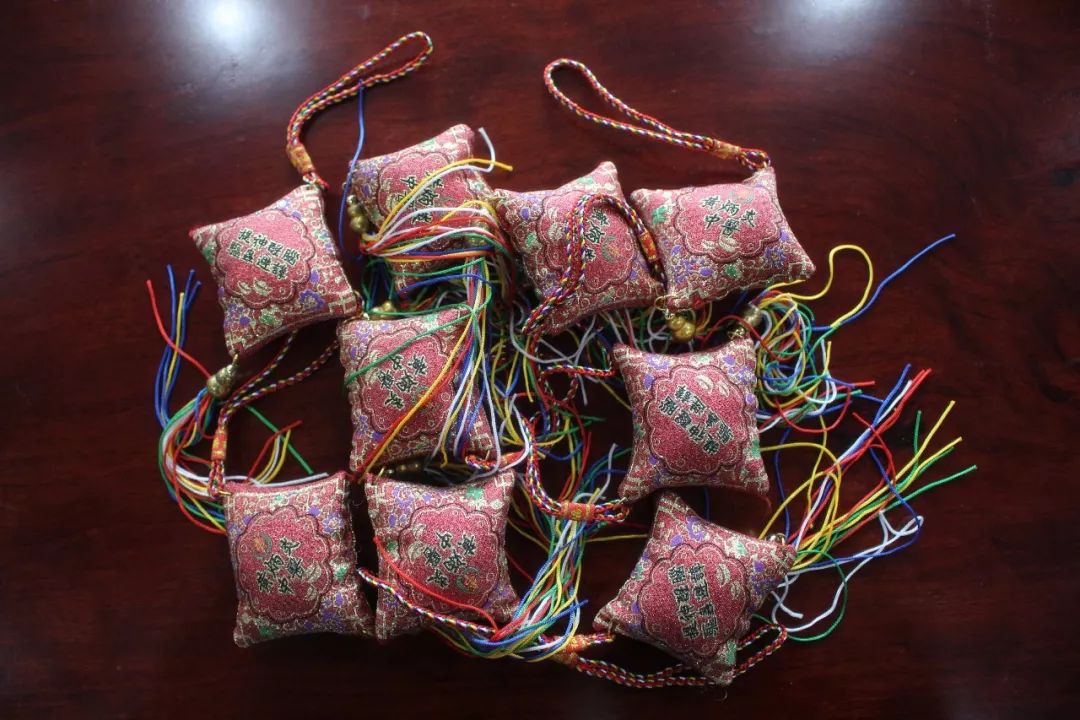


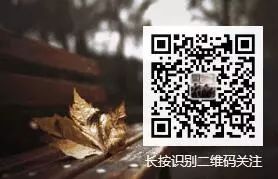
For over twenty years, Dr. Huang Bingyan has taken it upon himself to help the world, viewing saving lives and healing the wounded as his duty. Based on inheriting tradition and striving to promote the great learning, he has refined his medical skills, consciously broadened his horizons, and continuously made progress, widely seeking knowledge and visiting famous doctors. He has studied under renowned Chinese medicine practitioners such as Hu Fuchun and Yu Yingao, gathering strengths from various sources and deeply researching medical skills. He has treated tens of thousands of patients across Shanghai, Beijing, Hangzhou, Jiangxi, Yunnan, Sichuan, Guizhou, Hunan, Hubei, and other regions, accumulating rich clinical experience. His reputation is well-known, and patients from nearby counties such as Zhuji, Yiwu, Lanxi, Jiande, Tonglu, and Dongyang have great faith in Dr. Huang, seeking his medical advice in droves. Foreign businessmen from Germany, Russia, Arabia, Korea, Japan, and other countries who do business in Yiwu also come to seek his medical expertise.
Belonging Relationship
The twelve meridians belong to the twelve zang-fu organs. The so-called twelve zang-fu organs refer to the five zang organs and six fu organs, plus the outer membrane of the heart—the pericardium. The pericardium is also considered a zang. Thus, each meridian contains the name of its corresponding zang-fu organ, such as Lung Meridian, Stomach Meridian, Large Intestine Meridian, etc.
Additionally, the twelve meridians are also classified according to the yin-yang properties of their corresponding zang-fu organs and the characteristics of their distribution on the body surface, thus determining the yin-yang properties of the meridians themselves.
The zang organs are yin, and the inner sides of the limbs are yin; therefore, all meridians belonging to the zang are distributed on the inner sides of the limbs, hence they are called yin meridians; the meridians belonging to the fu are distributed on the outer sides of the limbs, hence they are called yang meridians. The yin meridians include the Taiyin Meridian, Shaoyin Meridian, and Jueyin Meridian.
The flow direction of the twelve meridians
The three yin meridians of the hand run from the chest to the hand, the three yang meridians of the hand run from the hand to the head, the three yang meridians of the foot run from the head to the foot, and the three yin meridians of the foot run from the foot to the abdomen (chest).
Hand Taiyin Lung → Hand Yangming Large Intestine → Foot Yangming Stomach → Foot Taiyin Spleen →
Hand Shaoyin Heart → Hand Taiyang Small Intestine → Foot Taiyang Bladder → Foot Shaoyin Kidney →
Hand Jueyin Pericardium → Hand Shaoyang Sanjiao → Foot Shaoyang Gallbladder → Foot Jueyin Liver → Hand Taiyin Lung
The connection patterns of the twelve meridians
The yin meridians and yang meridians (interior-exterior) intersect at the ends of the hands and feet, the yang meridians intersect at the head and face, and the yin meridians intersect at the chest.
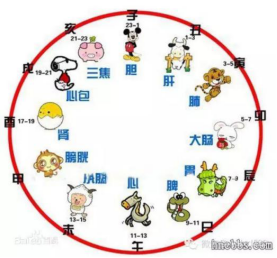
The flow sequence of the twelve meridians
The flow of the twelve meridians starts from the Hand Taiyin Lung Meridian, with the yin and yang interconnecting, beginning and ending, passing through each meridian until it reaches the Liver Meridian, thus forming a cyclical and endless flow system. This circulates qi and blood throughout the body, playing a nourishing role.
Flow song: Lung in Yin, Large Intestine in Yang, Stomach in Chen, Spleen in Si, Heart in Wu, Small Intestine in Shao, Bladder in Shen, Kidney in You, Pericardium in Xu, Sanjiao in Hai, Gallbladder in Zi, Liver in Chou.
①Hand Taiyin Lung Meridian. It is the first meridian to start running among the twelve meridians because:
1) Among the twelve meridians, only the Lung Meridian starts from the upper, middle, and lower jiao, running to the thumb’s Shaoshang point, where the qi of the whole body begins to circulate.
2) The running time of the Lung Meridian is during the Yin hour (3-5 AM), where 3-4 AM is the darkest time of the day, and 4-5 AM is when light is about to arrive. The ancients regarded the Yin hour as the beginning of the day, and the operation of the twelve meridians starts from the Yin hour with the Hand Taiyin Lung Meridian.
The Hand Taiyin Lung Meridian and the Hand Yangming Large Intestine Meridian both belong to metal; the Large Intestine Meridian is yang metal, while the Lung Meridian is yin metal, and these two meridians are interrelated and mutually restrictive.
From a treatment perspective, if there is fire in the lung, one should drain the large intestine to treat the lung; if the large intestine is very weak, with loose stools, diarrhea, or soft stools, one should drain the lung yin, using points like Lieque and Hegu, treating yin with yin and yang with yang.
The best times of the day are four: Zi, Wu, Yin, and You.
② Hand Yangming Large Intestine Meridian. It starts running at the Yin hour (5-7 AM), beginning at Shangyang and ending at Yingxiang. The lung moistens the large intestine, and the large intestine generates kidney water; this is the theory of Chinese medicine. Elderly patients with weak bodies and high blood pressure cannot take ginseng, as it cannot be absorbed. To strengthen the kidneys, one should supplement from the Large Intestine Meridian, as the large intestine is yang metal, which generates water; treating bladder diseases should be approached through the Lung Meridian.
③ Foot Yangming Stomach Meridian. It runs during the Chen hour (7-9 AM). As seen in the flow chart above, the Taiyang corresponds to the Taiyang, Yangming to Yangming, Shaoyang to Shaoyang, Jueyin to Jueyin, Taiyin to Taiyin, and Shaoyin to Shaoyin, which is very regular. The Foot Yangming Stomach Meridian starts at Chengqi and then descends to the second toe’s Lidui.
④ Foot Taiyin Spleen Meridian. It runs during the Si hour (9-11 AM), starting at the outer side of the big toe’s Yinbai, ascending along the inner side of the calf, entering the abdomen through Chongmen, and ending at the Daba point of the heart fire.
Acute diarrhea is generally caused by spleen qi not returning, so one can press the Yinbai point for five minutes. The Stomach Meridian and Spleen Meridian are interrelated, as the stomach is the function of the spleen.
⑤ Hand Shaoyin Heart Meridian. It runs during the Wu hour (11 AM-1 PM), starting from the heart, from the Jiquan to the little finger’s Shaochong point, its function is to circulate blood.
For over twenty years, Dr. Huang Bingyan has taken it upon himself to help the world, viewing saving lives and healing the wounded as his duty. Based on inheriting tradition and striving to promote the great learning, he has refined his medical skills, consciously broadened his horizons, and continuously made progress, widely seeking knowledge and visiting famous doctors. He has studied under renowned Chinese medicine practitioners such as Hu Fuchun and Yu Yingao, gathering strengths from various sources and deeply researching medical skills. He has treated tens of thousands of patients across Shanghai, Beijing, Hangzhou, Jiangxi, Yunnan, Sichuan, Guizhou, Hunan, Hubei, and other regions, accumulating rich clinical experience. His reputation is well-known, and patients from nearby counties such as Zhuji, Yiwu, Lanxi, Jiande, Tonglu, and Dongyang have great faith in Dr. Huang, seeking his medical advice in droves. Foreign businessmen from Germany, Russia, Arabia, Korea, Japan, and other countries who do business in Yiwu also come to seek his medical expertise.
⑥ Hand Taiyang Small Intestine Meridian. It runs during the Wei hour (1-3 PM), starting from the little finger’s Shaoze, ascending along the outer side of the arm to the shoulder, entering the chest, connecting with the heart, descending to the stomach, and linking with the small intestine. One branch runs from the clavicle to the cheek, to the outer corner of the eye, and enters the ear, reaching the upper cheekbone, and the inner corner of the eye connects with the Foot Taiyang Bladder Meridian. The heart and small intestine meridians are interrelated, functioning like the stomach, spleen, large intestine, lung, and kidney.
⑦ Foot Taiyang Bladder Meridian. It runs during the Shen hour (3-5 PM), starting from the Jingming point, running along the back, along both sides of the spine, descending to the outer side of the little toe. The Foot Taiyang Bladder Meridian has the most acupoints and is the longest meridian, with its back-shu points able to treat many diseases, such as headaches, nausea, vomiting, etc.
As long as the Bladder Meridian and the Foot Shaoyin Kidney Meridian are healthy, and the Hand Shaoyin Heart Meridian and Hand Taiyang Small Intestine Meridian are healthy, with normal urination and defecation, and normal heart blood and kidney water, these two meridians are normal, the human body is basically healthy.
If one wants to see if a patient can be saved, one should check if the urination and defecation are smooth. The large intestine is governed by the Small Intestine Meridian, which is interrelated with the Heart Meridian. The urination is governed by the Bladder Meridian, which is interrelated with the Kidney Meridian. Smooth urination and defecation indicate normal heart and kidney functions, and the patient can be treated.
If a patient is scratching and trembling, it indicates that the Bladder Meridian is broken, and there is no hope. Generally, we check the patient’s pulse from three places: ① Cun, Guan, Chi, ② Tasi, ③ Taiyang. If any meridian is broken, it is difficult to treat.
⑧ Foot Shaoyin Kidney Meridian. It runs during the You hour (5-7 PM), starting from below the little toe, diagonally emerging from the Yongquan, ascending along the inner side of the leg, along the inner side of the thigh to the Changqiang, entering the kidney from the spine, and the meridian runs upward through the liver and diaphragm into the lung, with a branch from the lung connecting with the heart, flowing through the chest to the Yufu point.
⑨ Hand Jueyin Pericardium Meridian. It runs during the Xu hour (7-9 PM), during which time the diseases of the pericardium are easy to treat. The pericardium meridian starts from the chest, passing through the diaphragm to the upper, middle, and lower jiao, with branches from the chest emerging from the armpit, ascending along the inner side of the arm to the palm, reaching the middle finger’s Zhongchong point, and a branch from the palm emerges from the Laogong point to the ring finger’s Guanchong point, connecting with the Hand Shaoyang Sanjiao Meridian.
⑩ Hand Shaoyang Sanjiao Meridian. It runs during the Hai hour (9-11 PM), during which time the diseases of the Sanjiao are easy to treat. The Sanjiao Meridian starts from the Guanchong point, ascending along the outer side of the arm to the shoulder, entering the supraclavicular fossa, spreading through the pericardium, with branches emerging from the chest, ascending to the clavicle, reaching the neck, with one branch entering the ear, emerging from the front of the ear to the outer corner of the eye, reaching the Sizhu point. Diabetes and obesity should be treated through the Sanjiao, as it has a good balancing effect on the body’s organs; the upper jiao is the heart and lung, the middle jiao is the spleen, stomach, liver, and pancreas, and the lower jiao is the kidney, large intestine, and small intestine.
11 Foot Shaoyang Gallbladder Meridian. It runs during the Zi hour (11 PM-1 AM), starting from the outer corner of the eye’s Tongziliao point, ascending to the back of the head, descending to the area behind the ear, with two branches: one running from the front of the ear to the Tongziliao point, to Renying—Jiaoche to the Juefen, and the other running from behind the ear to the neck, running before the Hand Shaoyang Sanjiao Meridian, entering the supraclavicular fossa, descending through the armpit, along the side of the chest, passing through the ribs, with branches meeting at the lower edge of the thigh, descending along the outer side of the leg to the foot, reaching the fourth toe’s Qiaoyin point. Another branch from the Tongziliao point runs along the back of the foot to the big toe’s Dadun point, connecting with the Foot Jueyin Liver Meridian.
12 Foot Jueyin Liver Meridian. It runs during the Chou hour (1-3 AM), which is the running time of the Foot Jueyin Liver Meridian, starting from the Dadun point, ascending along the back of the foot to the inner ankle, running along the inner side of the leg to the abdomen, alongside the stomach, belonging to the liver, connecting with the gallbladder, spreading through the diaphragm, circulating through the throat, connecting to the eyes, and meeting at the top of the head with the Du Meridian. A branch runs from the liver through the diaphragm into the lung, connecting with the Hand Taiyin Lung Meridian. At the Yin hour, the Hand Taiyin Lung Meridian starts running again, and the twelve zheng meridians continuously run in sequence throughout the twelve hours of the day.

